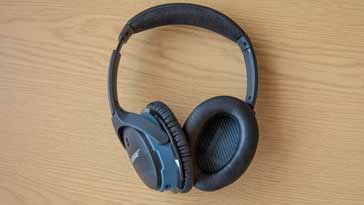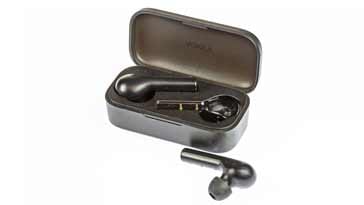Wireless / Bluetooth Headphones & Earphones
Wireless headphones and earphones most commonly use Bluetooth to provide the short range connections are being used more widely by many people.
Earphones, Headphones & Headsets includes:
Introduction to earphones & headphones
How do earphones / headphones work
Wireless / Bluetooth headphones & earphones
Noise cancelling headphones & earphones
Headphone specifications
How to buy best headphones / earphones for you
Wireless headphones and earphones are now commonplace. As they do not have a wired connection, they are very convenient to use.
With many smartphones moving more towards wireless only interfaces, listening to music and other material via wireless headphones is becoming more important.
Although Bluetooth is by far the most widely used wireless interface, other technologies are also used occasionally and these include infra-red.

How do Bluetooth headphones work
Bluetooth is one of the easiest technologies to use to provide wireless connectivity for headphones.
In order to have wireless connectivity between the source of the music or other material, both ends need to use the same method of connection. The main standard used is Bluetooth as this is available in virtually all smartphones as well as many other devices and this makes it an ideal choice. It is low powered, uses frequency hopping to reduce the effects of interference and it is easy to make a connection.
New Bluetooth standards are also optimised for low battery consumption - a major requirement for battery powered devices like wireless headphones.
Bluetooth also supports a variety of sound coding schemes, so it is possible to ensure that any loss in quality is not noticed by the majority of users. That said, many audiophiles feel there can be a loss in quality, but for listening on headphones it is very unlikely that the vast majority of people would be able to detect any difference. This is especially true as most music these days is streamed over the Internet and this will include some loss in the compression techniques used.
Note on Bluetooth:
Bluetooth is a wireless connectivity standard for short range communications. Using the 2.48 GHz ISM band and techniques like frequency hopping, it has developed into a standard that can be used not only for audio connections but very many other forms of wireless connectivity including IoT where low power is of the essence.
Read more about Bluetooth.
Formats for Bluetooth headphones & earphones
The traditional format was for wireless listening was to use headphones as there needed to be sufficient volume to accommodate not only the electronics required for the Bluetooth wireless transmission, but also for the batteries.
Modern day technology has enabled, not only the batteries and Bluetooth connectivity as well as the relevant amplifiers to be contained within a traditional headphone set-up but also earphones. Typically each earpiece is separate with no interconnecting wires and this means that each earpiece needs to have its own wireless connection with the associated electronic circuitry and battery.
Charging is typically achieved using connections to the individual earpieces in the small container or box for the earpieces - there are small metalised contacts on each earpiece which mate with corresponding pins within the box. A USB connection on the outside of the box is then used for supplying the required external power. This provides a very neat solution to get power into each earpiece.

How to choose the best wireless headphones
When buying wireless headphones and earphones there are several different points to consider. Cost, performance and a number of other things should all be looked at to make the final decision.
Technology: Most wireless headphones these days are Bluetooth headphones, but as there are soem other forms or connectivity, it is always best to check that the headphones or earphones use the required technology.
Headphones or earphones: One of the first decisions to make is whether buy over ear headphones or one of the in-ear earphones. There is a good selection of both options and they can both provide excellent performance. Modern technology has developed to the extent that there are very some good (and not so good) earphones and headphones available.
One of the first choices to make is whether the items to be purchased need to be over-ear headphones, on-ear headphones or in-ear earphones.
Read more about . . . . types of headphones & earphones in our specifications page.
Battery life: You don't always want to be charging the headphones or earphones, so it is wise to check the lifetime between charges, and also how long it takes to charge them up. Typically the useful lifetime between charges can range anywhere from 8 to 30 hours of operation or more. Work out what you need and
Weight: Particularly for headphones, the weight can be an important issue. Normally headphones can weight around 0.5 or 0.6 kg but some can be more or less. Wearing heavy headphones can be an issue when they are worn for long periods. Check the weight and also see if you can borrow some to see of the weight is bothersome.
Wireless headphones and earphones can be very convenient to use as they do not require the use of leads that can easily become tangled or connectors that can be broken or become intermittent after a while. As Bluetooth is the most widely used standard for short range connectivity, most wireless headphones are Bluetooth headphones.
 Written by Ian Poole .
Written by Ian Poole .
Experienced electronics engineer and author.
More Audio Video Topics:
HDMI
SCART
DisplayPort
DVI
Loudspeaker technology
Headphones & earphones
Bluetooth speakers
Stereo sound
Microphones
Audio compact cassettes
Vinyl record technology
Digital radio
DVB television
Return to Audio / Video menu . . .




